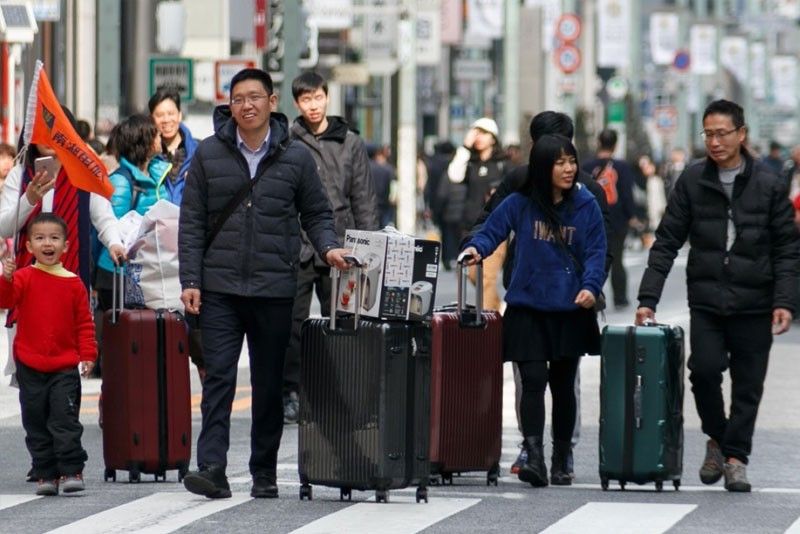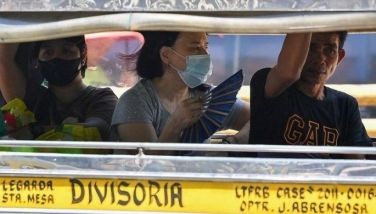Amid calls to amend visa policy, Chinese arrivals up

MANILA, Philippines — How many Chinese citizens have entered the Philippines since the visa-upon-arrival (VUA) privilege was granted to them in 2017, amid calls to scrap it?
Data of the Department of Tourism (DOT), taken from the arrival and departure cards of the Bureau of Immigration (BI) from January to May this year, showed that 733,769 Chinese travelers entered the Philippines and acquired tourist visas through the VUA.
The DOT also said that Chinese arrivals from January to May this year recorded “a staggering” 30.96 percent increase, with a 21.03 percent market share as compared to the same period in 2018.
The “Statistical Data of Arrivals in the Philippines per Nationality” report of the BI showed that the bureau has recorded 1,375,508 Chinese visitors in 2018, up by 26 percent from the 1,095,188 Chinese travelers in 2017.
This prompted National Security Adviser Hermogenes Esperon Jr. to raise concerns over security issues brought about by the number of Chinese nationals in the country.
Some of the Chinese tourists have reportedly converted the VUA, from a short leisure trip to the Philippines, into something that they can use to work in the country.
Reacting to news of Esperon’s security concerns, Department of Foreign Affairs (DFA) Secretary Teodoro Locsin Jr. posted on his Twitter account that the visas granted to Chinese nationals should undergo a vetting process by consular offices.
Malacañang has supported Locsin’s statement.
Just last Wednesday in Binondo, Manila, operatives of the Bureau of Customs (BOC) arrested 15 undocumented Chinese nationals during an operation against a business establishment which allegedly smuggled electronic products.
The BOC’s intelligence group said they have already coordinated with the BI for “documentation and processing” of the Chinese nationals after it was learned that nine of them were tourists illegally working in the country.
According to BOC operatives, three of the Chinese nationals were found to be of “unknown status” or have no record of travel, while two had “9G” – or pre-arranged employment – visas and one had a special working permit.
“All 15 Chinese nationals and their cases were referred to the legal division of the BI for initiation of deportation proceedings,” the BOC said in a statement yesterday.
Despite these incidences involving the influx of Chinese tourists and the ease by which they can enter the country, Department of Justice (DOJ) spokesman and undersecretary Markk Perete said the DOT is still seeking the expansion of the VUA, even before the issues of security and abuse of the privilege came out, as part of the tourism agency’s effort to invite more Chinese travelers to the country.
Perete said that the DOT is still targeting around 200,000 tourists from China this year, which is reason for the DOJ to be “cautious with what to do with the VUA.”
The DOT said in a statement on Friday that it is open to review and re-evaluate the VUA granted to Chinese nationals.
Perete said the DOJ granted the VUA to Chinese visitors in 2017, as they became the country’s biggest market that year, contrary to DOT records which showed that South Korean tourists are the number one travelers to the Philippines.
But as far as calls to abolish the VUA is concerned, Perete said the DOJ is still waiting for the BI to conclude its study on whether to scrap it or refine the process before coming up with the recommendations.
Perete emphasized that removal of the VUA privilege for Chinese tourists would hurt the tourism sector in the Philippines.
“If you remove it, a certain sector will be affected. So, the other option is to tighten the requirements so that it won’t be prone to abuses,” he said.
DOJ Secretary Menardo Guevarra recently said they are not closing the possibility of totally scrapping the VUA for Chinese tourists.
In another development, Perete said that an inter-agency group – composed of the BI, the National Bureau of Investigation, the Philippine National Police and the Department of Finance – was created “to correct the issues hounding the VUA.”
He added that the Department of Labor and Employment is also part of the inter-agency group along with several other government agencies.
BI records showed that the number of Chinese tourists in the Philippines started increasing in 2016, or during the start of the administration of President Rodrigo Duterte: 736,960 in 2016; 1,095,188 in 2017; and 1,375,508 in 2018.
Over the past five years, Chinese tourist visits have increased by 257.33 percent, from 384,931 visitors in 2014 to 1,375,508 travelers last year.
- Latest
- Trending




























